29 Apr Gota Work or Lappe Ka Kaam – Gold Ribbon Embroidery from India
Gota Work or Lappe Ka Kaam
This past year allowed us to work with many embroidery techniques from India, which are traditionally practised as embroideries of gold. A few days ago, when we wrote about one such Embroidery of Gold- Zardozi Embroidery, we received a great response. Therefore we feel encouraged to share more on Indian embroidery techniques from the genre of ‘gold.’ One such technique is Gota Work or Lappe Ka Kaam.
It is fascinating to see that humankind has used rare metals like gold and silver to adorn their textiles for centuries. And it is not just for the shine, glitter, and beauty that these metals offer but also for the wealth and stature of the individual they communicate.
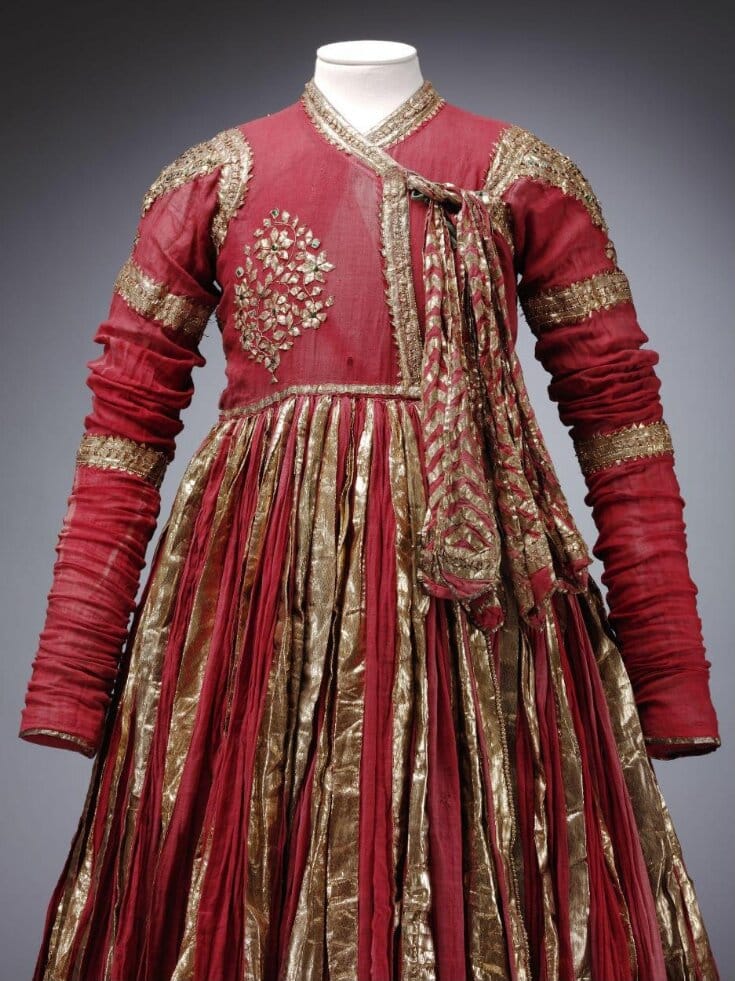
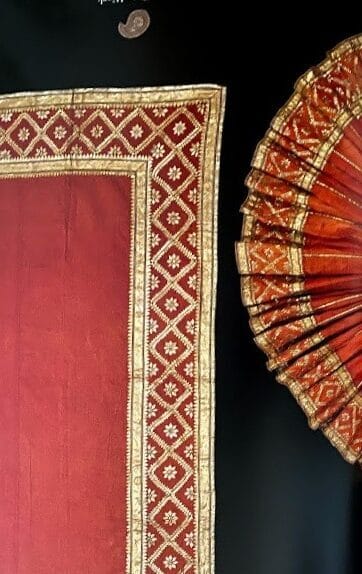
Gota Work or Lappe Ka Kaam is unique because its raw material is made and used uniquely. The state of Rajasthan in India is famed for keeping this craft in practice. “On religious and social occasions and festivals, it is de rigueur for the people in the state to dress in their finest clothes, ornamented with gota work,” says Vandana Bhandari, the writer of the book, ‘The Textile of Rajasthan at the Jaipur Court.’

The Making Of the Gota or Lappi or Lappa for Gota Work or Lappe ka Kaam
Traditionally Gota is handwoven as strips of gold or silver ribbon with pure gold or silver wires on the warp and cotton or silk on the weft. Nowadays, pure gold or silver wires are replaced by electroplated copper yarns or, for that matter, by synthetic yarns. However, some connoisseurs of the craft still use authentic raw materials as we at Marasim tried to do with our recent gota work developments in Rajasthan.
The beauty of gota work lies in how creatively this raw material can be made. It can be woven in a variety of widths. While thin ribbons are called lappi, broad ribbons are known as lappa. It can be woven in a variety of weaves like plain, twill, or satin weave. Some great weavers can introduce shapes and designs like chevron, zig zag, diamonds, etc., while weaving the ribbon.
Embossing is another gorgeous technique used to add stylistic motifs on the surface of the gold or silver ribbon. A plain woven ribbon (gota) is taken, and the designs are imprinted on it when the tape is passed between two metallic rollers, a plain and embossed one, and the pressure indents the design on the gota surface.

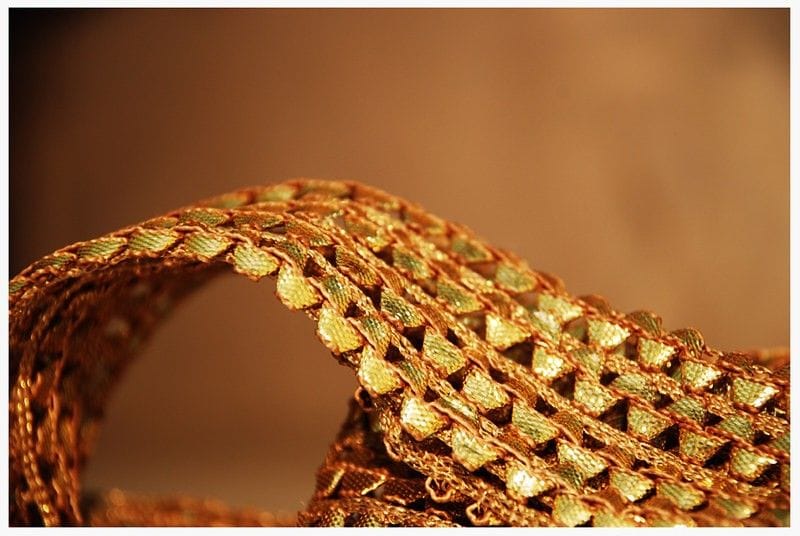
Use of Gota as Embroidery for Gota Work or Lappe Ka Kaam
The beautiful Gota can be stitched to the edges of the fabric as a beautiful gold lace. Or thin gota could be twisted, spiraled, and crimped to make beautiful motifs like florals, or it is most uniquely used for Gota Patti embroidery.
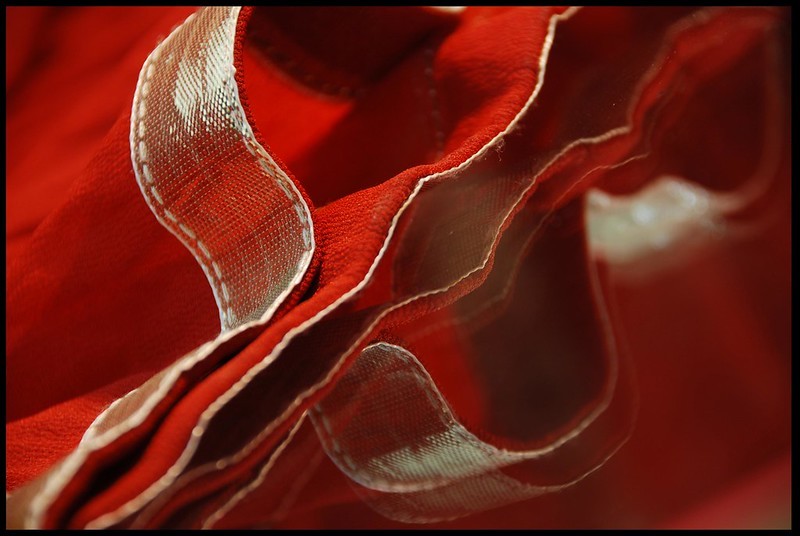
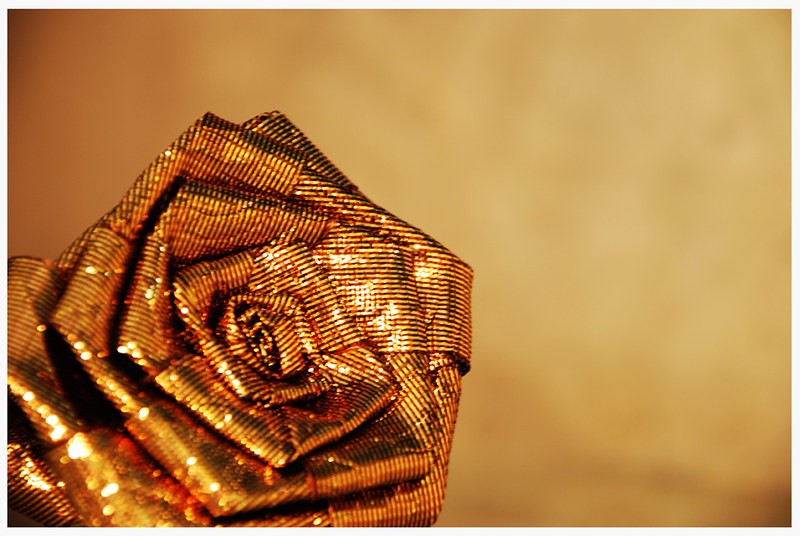
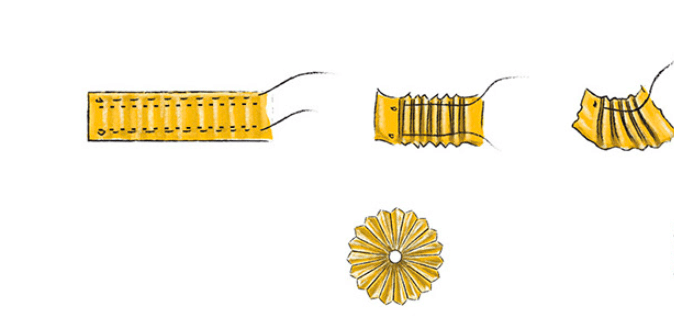
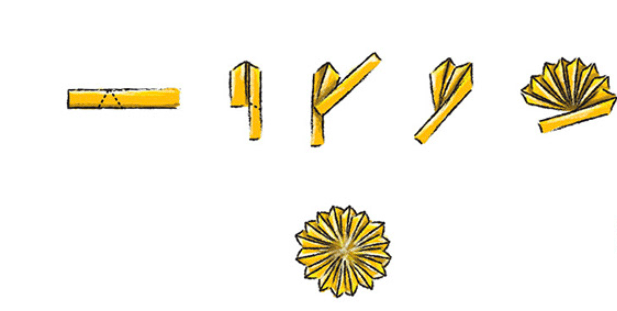
Gota Patti Embroidery
Gota and Patti are Hindi for Gold or Silver ribbons and leaves. Therefore, Gota Patti essentially means Gold Ribbon leaves. In Gota Patti embroidery, the gota is cut, and the edges of the gota are folded in the shape of diamond-shaped leaves, which are then pressed using the rolling pin. These leaves are then arranged and appliqued on the surface of the fabric using various stitches to form the flowers, birds, animals, etc.


The cutting of the leaves for applique is done in various shapes like big or small circles or leaves or diamonds. The cutting is done either by hand or by machines.
The applique work is done using the couching technique, meaning the pressed leaves are laid in a pattern across the surface of the ground fabric and fastened in place with tiny stitches of the same color yarn. The edge finishing can be done in many creative ways, such as a chain stitch using the aari needle or raw materials used for zardozi embroideries like spirals or coils.
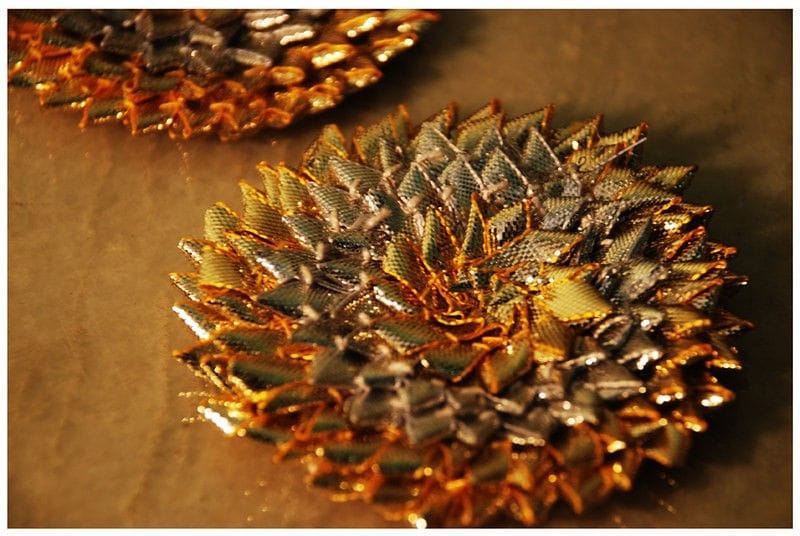
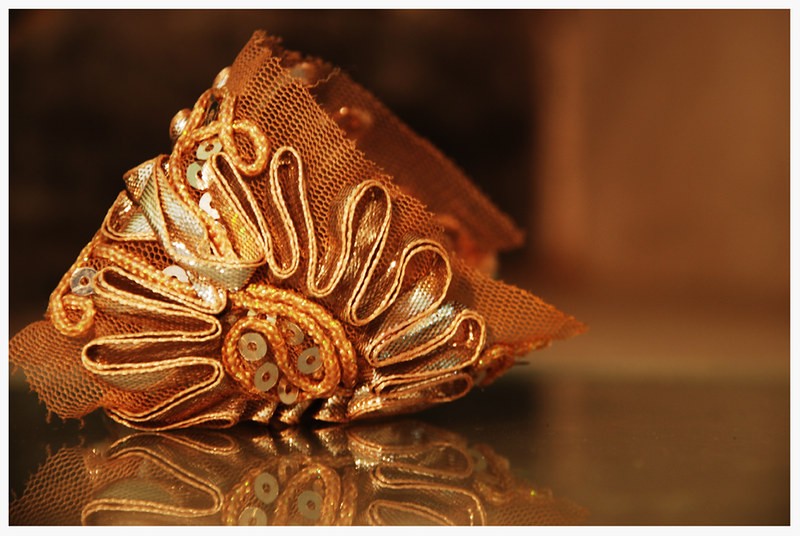
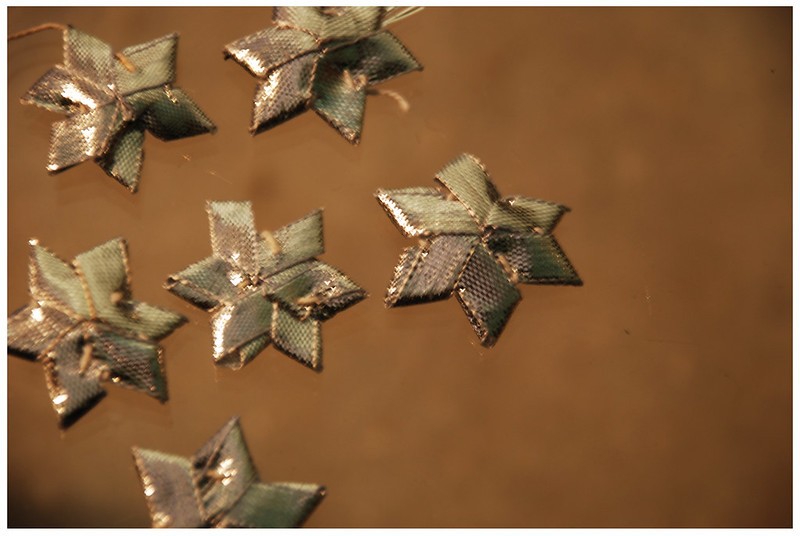
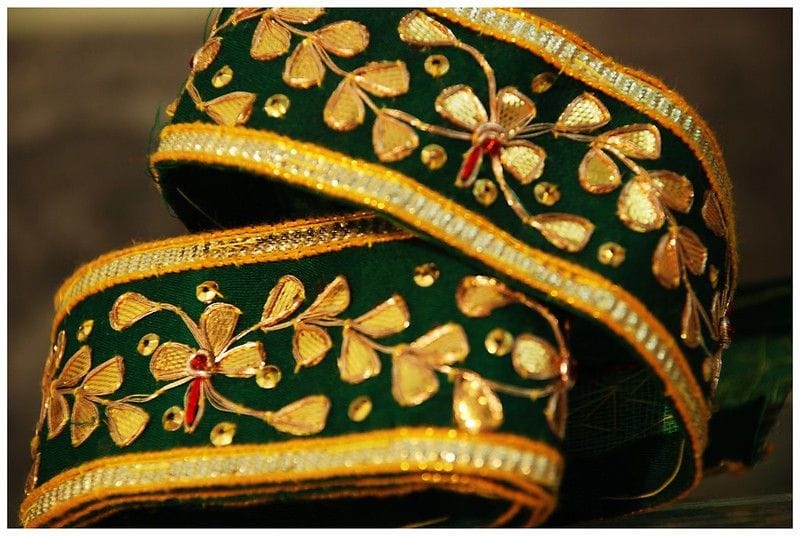
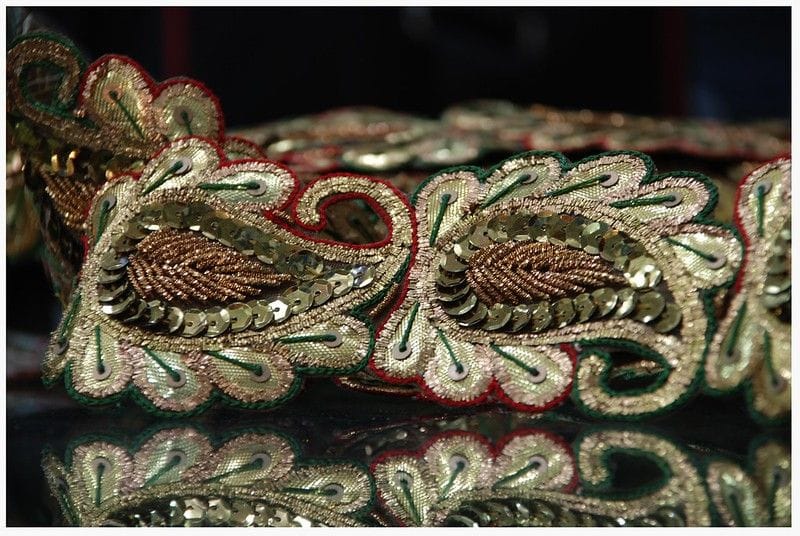
The most beautiful part of the gota technique is that the raw material and the designs can be removed from the surface of old textiles to be upcycled or recycled and reused.
With machine-made synthetic or rather plastic ribbons readily available, it is now undoubtedly less expensive to use this technique nowadays. However, the beauty of gota work lies in the authentic lappa or Lappi woven tastefully by hand using pure materials. The sky is the limit for innovative ideas in design.
READ MORE ABOUT OTHER EMBROIDERIES AT OUR EMBROIDERY SERIES
ABOUT THE AUTHOR
 Nidhi Garg Allen is an alumnus of Parsons School of Design and Adjunct Professor at the Fashion Institute of Technology. She is a technologist turned artisan entrepreneur and the founder and CEO of Marasim. Marasim based in NYC is committed to preserving artisanal textiles that make use of regional techniques without uprooting craftspeople from their native communities
Nidhi Garg Allen is an alumnus of Parsons School of Design and Adjunct Professor at the Fashion Institute of Technology. She is a technologist turned artisan entrepreneur and the founder and CEO of Marasim. Marasim based in NYC is committed to preserving artisanal textiles that make use of regional techniques without uprooting craftspeople from their native communities


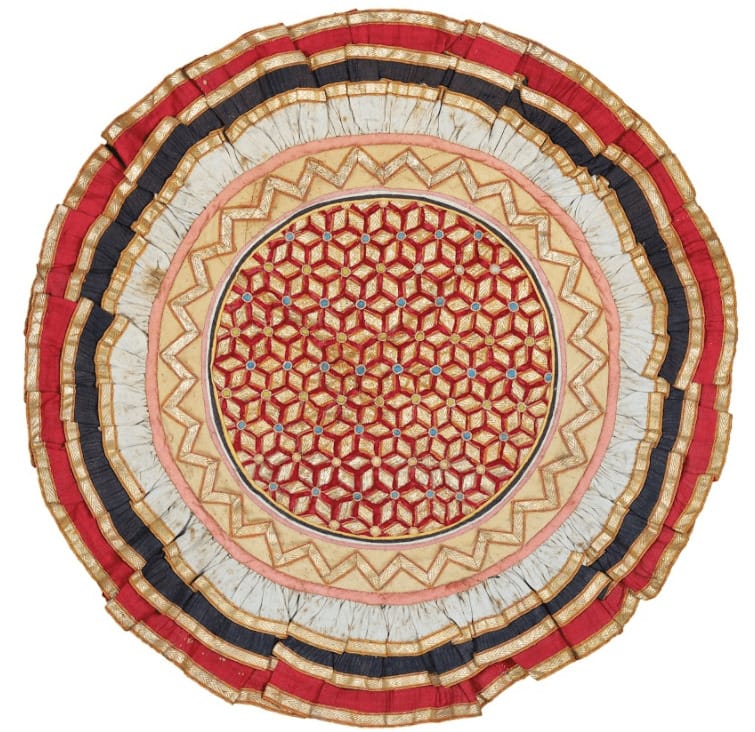
No Comments